Related Article
-
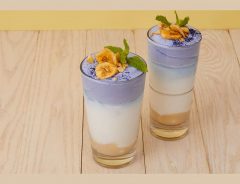
Yokohama café’s summer latte impressively recreates Hawaii’s beautiful beach colors
-
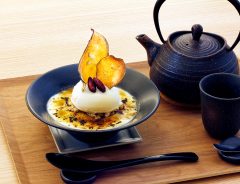
BE: SIDE Funabashiya releases season limited winter-warming Kuzumochi dessert
-
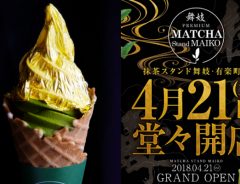
Gold Leaf Matcha Soft Serve Ice Cream is Japan’s New Luxurious Trend
-

This Harajuku Kiosk Has the Longest Snacks in Japan Conveniently in One Place
-
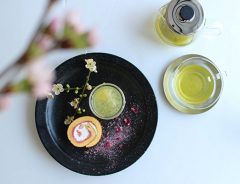
Delicious Sakura Dessert Plates And Shakes Will Make Cherry Blossom Viewing Even Better
-
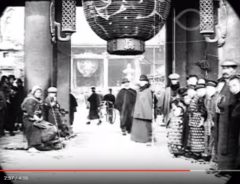
Watch Vintage Footage of Famous Sights in Tokyo from 1915
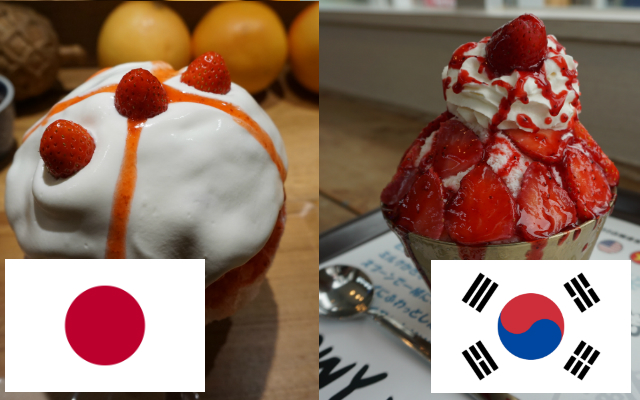


Both Korea and Japan have their own take on the shaved ice dessert and both use similar ingredients to create their respective treats. Ice is ground down into flakes by an electric or hand operated machine, then a sweet milk syrup is poured on to give the ice flavour. Syrups, sauces, fruit, traditional or modern toppings are then piled on.
The two desserts do differ though, in some subtle ways.
So, Japanese kakigori or Korean bingsu, which one is better? There’s only one way to find out.
I chose two representatives from popular shaved ice joints in Tokyo so they can go head to head for the icily delicious crown. Let's meet the contenders.
Representing Japanese Kakigori - Kooriya Peace, Kichijoji
You may know it as a festival food, but if you go to a specialist kakigori restaurant you can get much more elaborate creations than your standard matsuri fare. While festival stands use bottled syrup to get the flavours, a restaurant will have a range of thick, decadent, handmade syrups using ingredients like yoghurt and fresh fruit.
Source: © Grape Japan
Koriya Peace is an intimate restaurant housing just one long counter table (you may have a long wait for a seat during summer). It’s located in Kichijoji, a trendy but chill suburb of Tokyo where you can find plenty of unique independent cafes.
Kooriya Peace Menu. Source: © Grape Japan
This is the Double Strawberry shaved ice. A generously sized snowball flavoured with milk, strawberry syrup and a massive dollop of yoghurt on top. Three full strawberries decorate the top and there were more strawberry pieces hidden inside. The presentation is akin to a piece of art, but it’s necessary to do a bit of landscaping as you eat so the whole thing doesn’t just collapse.
Source: © Grape Japan
Representing Korean Bingsu - Snowy Village, Shinokubo
To sample the Korean side of things in Tokyo, where else but the thriving Korean town, Shinokubo which at the moment seems to be riding the second Hallyu wave thanks to the popularity of K-pop groups like Twice and BTS.
Source: © Grape Japan
I chose Snowy Village, a chain restaurant with branches in various countries. I ordered the ‘Fresh Strawberry’ option to try to be fair in comparing, despite the fact there are many elements to this experiment which have already rendered it fundamentally unfair.
Snowy Village Menu. Source: © Grape Japan
The presentation was less artistic than the kakigori from Peace, and appeals more to the Instagrammable side of things, with plenty of juicy strawberries adorning the shaved ice mountain. The dessert was topped off with cream and a whole strawberry, and they didn’t go overboard with the syrup. If it looks a bit short on flavour on first impressions, you’ll be glad to know there’s plenty more syrup and strawberry pieces hidden inside. Also judging from the colour of the ice, it's possible they flavour the ice with milk beforehand.
Eating shaved ice on a rainy day, for science. Source: © Grape Japan
Source: © Grape Japan
So What is the Difference?
Based on this very limited test the main differences seem to be as follows.
The kakigori gained most flavour from syrup and yoghurt while the bingsu had more emphasis on abundant toppings.
The texture of the ice was completely different. The kakigori was like very fine shards of ice but the bingsu was even finer, like powder and similar to desiccated coconut in appearance.
Kakigori shown on the right, bingsu on the left. Source: © Grape Japan
So Which is the Best?
They really were both delicious, and I guess it comes down to whether you value toppings over syrup or vice versa. For me, the texture of the bingsu ice was much more pleasant to eat, but the syrup and yoghurt combo on the kakigori was heavenly. In the end, I'll cop out of making a firm judgement and recommend you try both!
Restaurant Information
Kooriya Peace
3 minute walk from Kichijoji station
Address: 180-0003 Tokyo, Musashino, Kichijoji Minamicho 1-9-9 (Kichijoji Jizo Building 1F)
Kooriya Peace Website
Snowy Village
3 minute walk from Shinokubo station
Address: 169-0073 Tokyo, Shinjuku, Hyakunincho 2-2-3 (TRN Shinokubo Building 2F)
Snowy Village Instagram